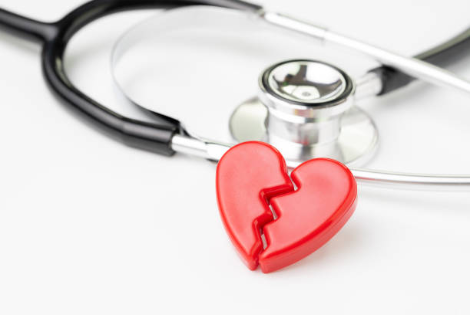When patients become severely ill with COVID-19, the coronavirus infiltrates deep into the lungs and causes mayhem on the tissues that line the organ. The infection can cause swelling, and fluid and debris can start to fill the lungs. It can feel like drowning on dry land.
Patients who remember being intubated sometimes describe the experience of being on a ventilator as one of the most uncomfortable of their lives. The damage from the virus can also spread to other organs, and if the infection is severe enough, the patient can die.
But why and how the coronavirus causes such complications are questions that scientists are still trying to answer. In one effort to shed new light on these mysteries, Broad Institute genomicist Alexandra-Chloe Villani, also affiliated with Massachusetts General Hospital and Harvard Medical School, has been working with a large team of researchers from institutions including Harvard, Massachusetts General Hospital and MIT to conduct autopsies on people who died from acute COVID infections.
“Prior to this study, we had limited knowledge of the cellular and molecular mechanisms leading to patients’ demise,” she says. “If you really want to understand why patients are passing away, why we’re witnessing organ failure, you need to study the tissue itself.”
Villani and her colleagues conducted autopsies on 17 people, collecting tissue samples from the lungs, heart, kidney, liver and brain. In a paper published in Nature on Thursday, the researchers shared the first part of their findings. WBUR spoke with Villani about her work. This interview has been edited for length and clarity.
What was it like to do these autopsies?
I’ve been working with human tissue and a range of diseases, including cancer, for 19 years now. Doing autopsies is not foreign to me but, in this case, it was very different. The whole world is suffering from the pandemic, and some of the patients from whom we collected tissues were my age or younger than me. You think the dead could be a family member or friend or yourself when they’re so close to your age.
I’d coordinate with my clinician colleagues on the front line and get some information about the patient. Right away it hits you, and we were working at crazy hours of the day to [collect the tissues]. It was pretty emotional.
The pathologists do the dissection. They’re very impressive in their suits – these fully enclosed astronaut-like suits – for safety. I was on Zoom guiding the team through the [tissue processing and experimental aspects of the] autopsies. Healthy lung tissue is like a pinkish color, but as you go to the more infected tissue, it looks a bit browner. The texture is harder when you touch it. The dead tissue is extremely dark and black and extremely necrotic – when you have a lot of dead cells.
What are some of the key findings from the study?
What was pretty fascinating was we could see the damage at the cellular level, one cell at a time. We observed the destruction of a cell type called AT1, which are important cells that enable you to breathe and exchange oxygen and carbon dioxide. These cells were infected and dying.
The lungs have another type of cell called AT2. They can convert themselves into AT1 cells to replenish cells that might die naturally or due to damage. But in COVID-19, this process is stopped midway. So, then it looks like the body, in a last attempt to repair the lung, turns to another cell type in the lung called progenitor cells. These are like stem cells and serve as an emergency reserve to help repair damage in the lung.
So, we think the damage from the virus could be outpacing the lung’s ability to heal itself, leading to lung failure. We also see a lot of immune cells in the lung, and their response to fight the virus is probably contributing to collateral tissue damage.
We also looked at the heart in this study. Some patients sustained significant heart damage, but we didn’t find any viral RNA in the heart. It’s unclear if by the time we studied the heart tissue, heart cells already cleared the virus or the heart simply suffered collateral damage from the disease. So, we need follow-up studies.
How can this information lead to therapies to help treat COVID-19 infections?
We have some candidates [for therapies] coming out from some of our data. It needs validation before we can officially disclose them publicly. We also have some candidates from the blood work that’s being done in parallel, and we’ve identified some ways to predict death in COVID-19 patients. One of the things we’re already learning is that the timing of treating patients is quite key. You want to treat patients earlier in their disease course.
We’re also looking at these tissues to understand why some patients responded to some therapy, and some other patients did not respond to the drug. We’re comparing the data we have across different organs to understand patients that had multiple organ damage and patients who only had lung damage. Hopefully this can lead to some personalized medicine approaches for people suffering from COVID-19.
How many people worked on this study?
The autopsies were performed at Massachusetts General Hospital, Brigham and Women’s Hospital, and Beth Israel Deaconess Medical Center. But the study also involved scientists at the Broad Institute, MIT, Harvard, the Ragon Institute, Columbia University and other institutions. This was a huge effort, and a crazy amount of work, crazy hours.
None of this would have been possible without the ultimate gift – a gift from these patients and their families who agreed to donate the tissues for research. I blush when I say this. We’re very grateful to the person and their family.
